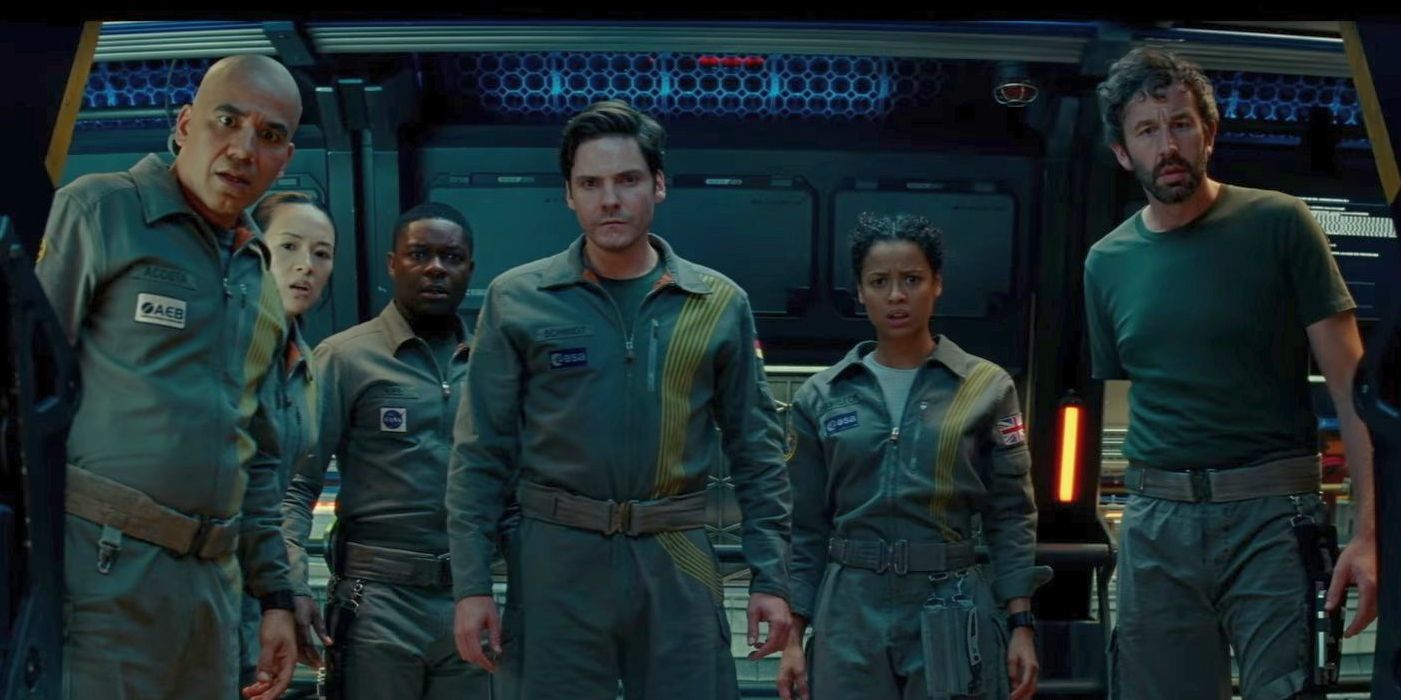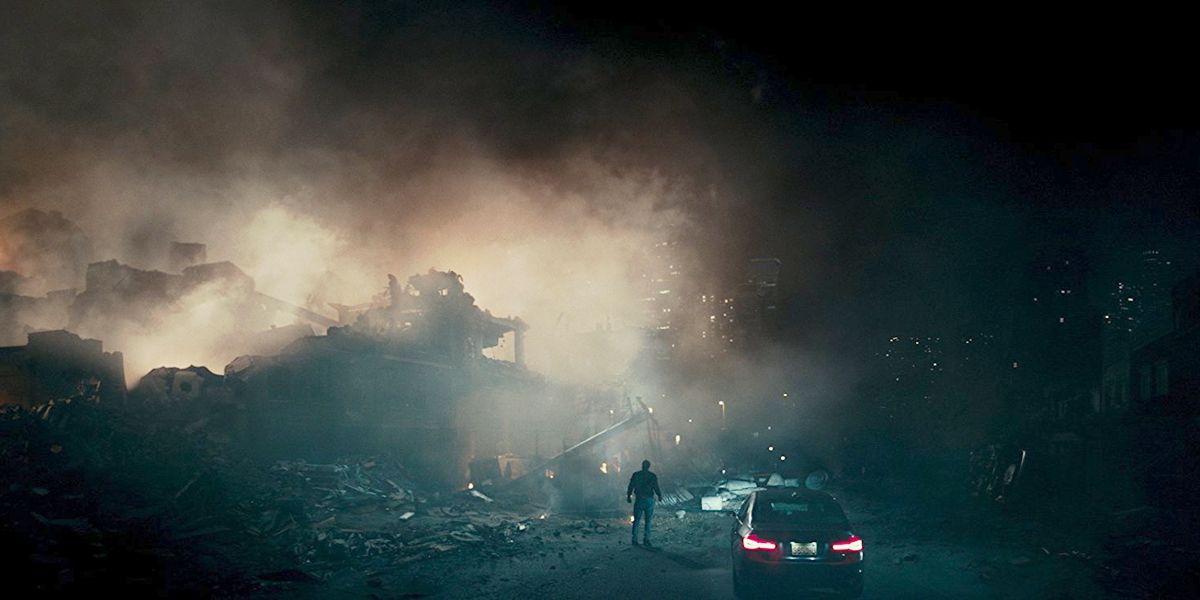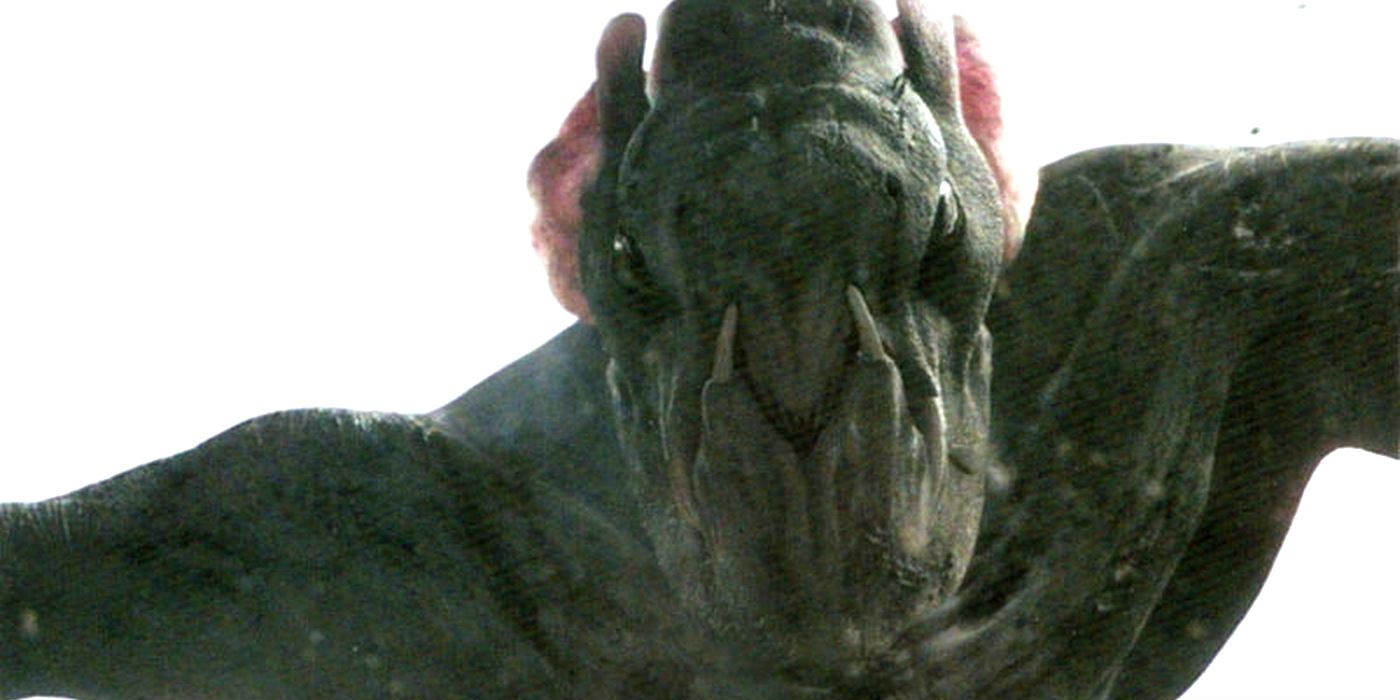WARNING: The following article contains major spoilers for The Cloverfield Paradox, streaming now on Netflix.
The Cloverfield Paradox covers a lot of ground in connecting the dots within the J.J. Abrams sci-fi/horror universe, introduced in 2008 with director Matt Reeves' found-footage monster movie Cloverfield. This, the franchise's third chapter, actually accomplishes much in providing a larger backstory for the creatures that wreaked havoc in the original film and its 2016 sequel 10 Cloverfield Lane, and puts into context why humanity is such a state of disarray.
RELATED: Cloverfield Paradox Trailer Revealed, Debuts Tonight on Netflix
What director Julius Onah does in The Cloverfield Paradox is provide the building blocks for the universe, and piece together a narrative for how humanity came under attack from mysterious creatures, all spawning from this vision of the Cloverfield Space Station. While trying to perfect an unlimited energy source to rescue a near-future Earth in on the brink of collapse, the crew of an international space station instead kick-starts the planet's destruction by inadvertently unleashing monsters upon mankind.
The team of astronauts sets off into space to conduct experiments using the Shepard, a high-energy particle accelerator deemed too risky to use on Earth. After numerous failures, they achieve their goal, but in doing so, are transported into an alternate dimension where they wipe out the Cloverfield crew from that reality.
One remnant from this alternate space station, Mina (Elizabeth Debicki), is rescued, but a series of unexplained horrors begins to plague the team. That leads to crew members dying one by one, as Schmidt (Daniel Brühl) finally realizes they need to return to their own dimension to stabilize dimensions. However, back on their Earth, the Cloverfield's breach of space and time causes monsters from alternate dimensions to appear on the planet, which is what led to the attack on New York City in the original Cloverfield, and what inspired the events at the end of 10 Cloverfield Lane.
RELATED: Cloverfield 4 Heads to WWII, Might Already Be Done Filming
At the end of The Cloverfield Paradox, Ava (Gugu Mbatha-Raw) has to fight off Mina, who doesn't want the Shepard to head home because she hopes to harness energy to save her own Earth. However, she's killed by Ava, who resists a desire to remain on Mina's Earth and have the family she lost. A revitalized and hopeful Ava then takes the lone survivor of Mina's onslaught, Schmidt, and uses the Shepard to energize the Cloverfield and head back to their own dimension.
Back there, however, Ava's husband Michael (Roger Davies), a physician helping the injured as monsters ravage New York City in the original movie, flees and hunkers down with a young girl, Molly (Clover Nee), whom he rescues along the way. All that time he's been in contact with Joe (Greg Grunberg), a communications officer for the Cloverfield team, to learn whether Ava and the space station have reappeared.
Sadly, when they do resurface at the film's conclusion, it's bittersweet. Having returned from the alternate dimension, Ava and Schmidt use an escape pod to return to Earth, only for Michael to berate Joe for not telling them about the destruction that awaits them, and warning them to remain in space. Joe explains they didn't have enough life support and, therefore, had to return to Earth. As the pod falls through the clouds en route to Delaware, we finally see the roaring creature from 2008's Cloverfield, fully visible, before The Cloverfield Paradox cuts to the credits.
That leaves the fate of the Ava and Schmidt up in the air, or else signals the grim possibility they fell into the path of the giant monster.
Directed by Julius Onah, written by Oren Uziel and Doug Jung, and produced by J. J. Abram, The Cloverfield Paradox stars Daniel Brühl, Elizabeth Debicki, Aksel Hennie, Gugu Mbatha-Raw, Chris O’Dowd, John Ortiz, David Oyelowo, and Zhang Ziyi.



